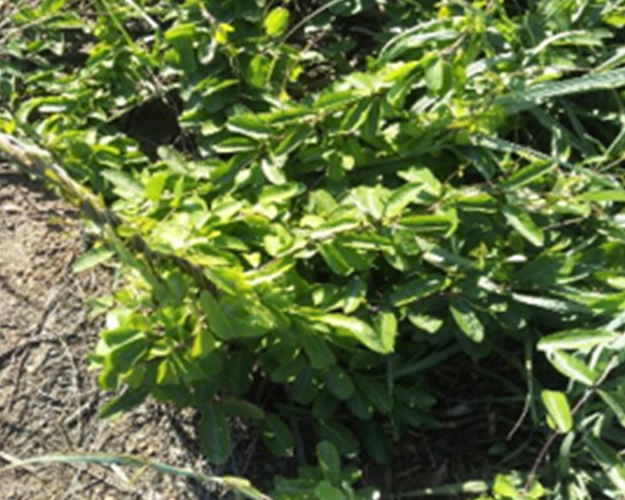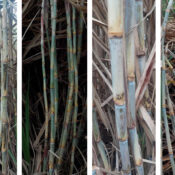
Creepers and how to reduce their economic importance
Creepers
A creeper or a vine is any plant having a long, slender stem that trails or creeps on the ground or climbs by winding itself and holding on the support through tendrils or claspers.
Common creepers
The common vines in the Zimbabwe Sugar Industry [ZSI] are Ipomea species (Ipomea sinensis, Ipomea plebeia sub species Africana, and Ipomea Purpurea. Other Ipomea species include the Ipomoea nil and the Ipomea obscura. Other vines of economic importance are Cucumismetuliferus, Convolvulus arvensis and farisonosus; Cissampelos mucronata and Ectadiopsis oblongifolia.




Figure 1. Some of the common vines found in sugarcane fields in the Zimbabwe Sugar Industry.
Possible reasons for proliferation
Changes in land preparation and weed management strategies could have resulted in increase in the vines population in sugarcane fields. During plough-out, some of the perennial vines are killed through use of a herbicide, Glyphosate (Round-up), that is applied primarily for the eradication of the old cane crop. The Glyphosate also kills some of the perennial vines during cane eradication and this is often effective because of the high rates of glyphosate applied.

Land preparation done after stools are dead, exposes the remaining tubers thus allowing them to desiccate [dry up] after discing during the three months fallow.


Figure 3. Cane planted where cane volunteers are still growing. The type of land preparation common in the industry besides allowing spreading of RSD, and other pests have resulted in increases in vines.
Failure to observe the three months fallow could have allowed for the proliferation of the vines in sugarcane fields. In order to cut costs, during plough-out, no Glyphosate is applied and the tubers are not given enough time to dry-out [desiccate] and die. The practice results in tubers that are cut into smaller pieces, spread over larger areas and left to re-generate. As they grow, the development of the tubers and rhizomes make them more difficult to control. The result is an increase of the vines in the field which is the obtaining situation.
The vines can also multiply through seeds and as annuals these are easy to kill using broadleaf killers like Actril DS. Hurried land preparation and planting of new sugarcane crop coupled with poor control of the vines during their annual stage of growth when they are more susceptible to herbicides have led to unprecedented levels of vines in the sugarcane fields making them more economically important.
The Zimbabwe Sugar Industry depends on use of Actril DS [2,4 D + Ioxynil] however when used on well-established perennial vines, challenges related to low efficacy have emerged. The low efficacy is linked to extensive development of tubers and rhizomes [Figure 4] that make the vines difficult to kill among other issues.


Figure 4. Extensive root system that makes vines difficult to control. Systemic herbicides usually at high rates will be required to control the vines. The use of such herbicides at higher rates often results in cane damage.
Recent research work has shown an improved efficacy when Actril DS is tank-mixed with Stellar Star [Topramezone and Dicamba] but even this tank mix of four herbicides is limited in its efficacy. Work involving other herbicides recommended elsewhere, the likes of Fluroxypyr recommended in Mauritius, Picloram and Trichopyr resulted in good vines control however some crop damage was experienced. More work continues as we combine the herbicides with some effective ones like Actril DS, MCPA and Stellar Star and to refine rates so as to achieve selectivity.
How to reduce economic importance
In the mean-time, we recommend the use of Glyphosate during plough-out where some of the perennial vines are killed by the Glyphosate (Round-up) and they are also allowed to desiccate after discing during the three months fallow.
After each harvest, removal of perennials [pulling and/or hoeing] should be done prior to pre-emergence application. It should be appreciated that the perennial vines would not be affected by your pre-emergence herbicide application.
A tank-mix of Actril DS and Stellar star is recommended in the control of annual creepers and recommended in the interim for the reduction of perennial creepers in sugarcane as more work continues.





Quite interesting results from the work on creepers that you recently concluded at sect 6 Triangle. Well done